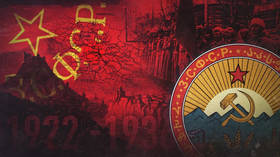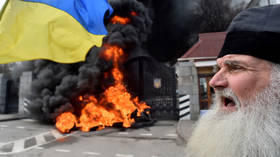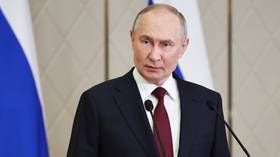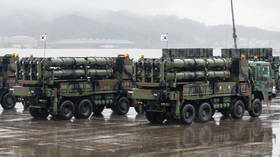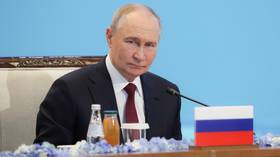Death in the air: How Moscow’s 18th century plague outbreak resembled the Covid-19 pandemic
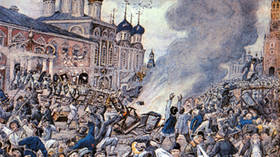
Over three years ago, in December 2019, a hospital in Wuhan, China, registered increased cases of what looked like severe pneumonia, due to an unknown cause. This turned out to be the harbinger of a reality that still reverberates with us today, having marked the beginning of the global Covid-19 pandemic, with all of the ensuing restrictions.
Yet, regardless of how new such a situation may have seemed to us, this was not humanity’s first time facing a pandemic. The notorious Black Death – the bubonic plague that became one of the defining symbols of the Middle Ages – was also fought with the help of state measures. One of the last outbreaks of this disease in Europe occurred during the reign of Russian Empress Catherine the Great. Surprisingly, many features of this bygone pandemic are reminiscent of our times and its epidemics. So, what helped Russia make it through that ordeal?
A disease from the theater of war
In 1770, Russia waged war against Turkey. This was one of the key conflicts between the empires. As a result of Saint Petersburg’s victory, huge areas of the current south of Ukraine were transferred to the Russian Empire and Crimea was acquired. However, it also brought on a major health crisis.
In the early autumn of 1769, during the fighting in Moldova and the southwestern territories of present-day Ukraine, Iasi and Khotyn, there were reports of a plague that had spread from the captured Turks. Gradually, it infected hospitals. At first, no one paid much attention to the disease. Moreover, following short local outbreaks, cases began to decline, and it seemed there was no danger in store.
However, the first incident that set off alarm bells happened in the town of Batumany. Doctor Gustav Orrues, a medic of Swedish-Finnish origin in the Russian service, was sent to the town and found it abandoned. Nearby, Orreus came across a Russian officer who reported that about 800 people out of the town’s population of 3,000 had died and the rest had fled.
The disease spread to the soldiers of the Russian garrison. An outbreak followed in Iasi. The commander, General Stofeln, who led the operations in Moldova and Wallachia, at first simply ignored the threat. By the time it became clear that the spread of the disease was out of control, Stofeln began taking measures, but it was too late: outbreaks were widespread, soldiers and townsfolk were dying, and the general himself succumbed.
Orreus organized an infirmary in a monastery near Iasi, but the genie was already out of the bottle: the disease was spreading in Moldova and whole armies were dying out. There were not a lot of medical personnel in the Russian army and almost none in the new territories. Instead of real doctors, “plague captains” were appointed in the cities to warn about the disease, organize quarantines, and distribute medicine when available. Healthy people, in the absence of other means of prevention, were given amulets.
None of that helped much. The disease spread to Transylvania, while another wave moved across Russia and Poland to the northeast. It struck Kiev and practically emptied Podol. Quarantines were initially poorly organized, and gradually the disease spread to the Don and Kuban regions through refugees and merchants.
The plague in Moscow
Early in the autumn of 1770, the virus reached Moscow. At first, most patients had a mild form of the disease. Malaria was also spreading through cities at the same time, so it went almost unnoticed until patients with pronounced buboes (swollen lymph nodes characteristic of bubonic plague) appeared. An outpost with medics was located in the city of Serpukhov near Moscow, but in November an officer who came from the army died in Lefortovskaya Sloboda. Soon the doctor who treated him died, and then more than twenty people from nearby houses also passed away. Moscow was a big city, and it was difficult to isolate it completely, particularly given that people were returning from the war, and traveling from Ukraine and from Poland. On December 21, Dr. Afanasy Shafonsky reached an unequivocal conclusion: this was the dreaded plague.

The hospital was isolated with thousands of patients and doctors inside, and the city was closed off. However, it was already too late. In fact, the key problem was the unwillingness of officials to sow panic and a persistent desire to mistake the plague for less dangerous diseases. Even the management of the hospital where the disease was recorded did not report the outbreak for a long time.
As a result, state measures were always a step behind. By the time quarantines were enacted, the epidemic had already penetrated inside a perimeter that was supposed to be protected or had escaped beyond the original place of an outbreak.
Outposts were set up at all entry points to Moscow, where merchants were inspected and quarantined. These measures seemed to help, and in February it was decided that the disease had been defeated – at one point, it was thought that it might not have been the plague at all.
But in March, a new outbreak began at a cloth factory in Zamoskvorechye. Buboes and carbuncles on the bodies of the infected left no doubt about the diagnosis. Dr. Orreus, who came from Moldova, knew well what the plague was from his work in the army. Soon, General Petr Eropkin was appointed head of the ‘headquarters’ for combating the epidemic.
The quarantine intensified. In Moscow, beggars were detained and sent to specially equipped places. Eropkin divided the city into districts, each headed by special officials who monitored separate zones. All available doctors, including retired ones, were mobilized to fight the outbreak. New cases were immediately reported to Eropkin personally, and patients were immediately isolated by the police in the hospital at the Ugresh Monastery. The houses of the sick were cordoned off and neighbors were isolated separately.
These were reasonable, decisive measures. The problem is that the Moscow administration, as well as the government as a whole, tried to lift quarantine measures as soon as possible. As a result, having nearly defeated the plague by summer, the authorities once again withdrew the restrictions.
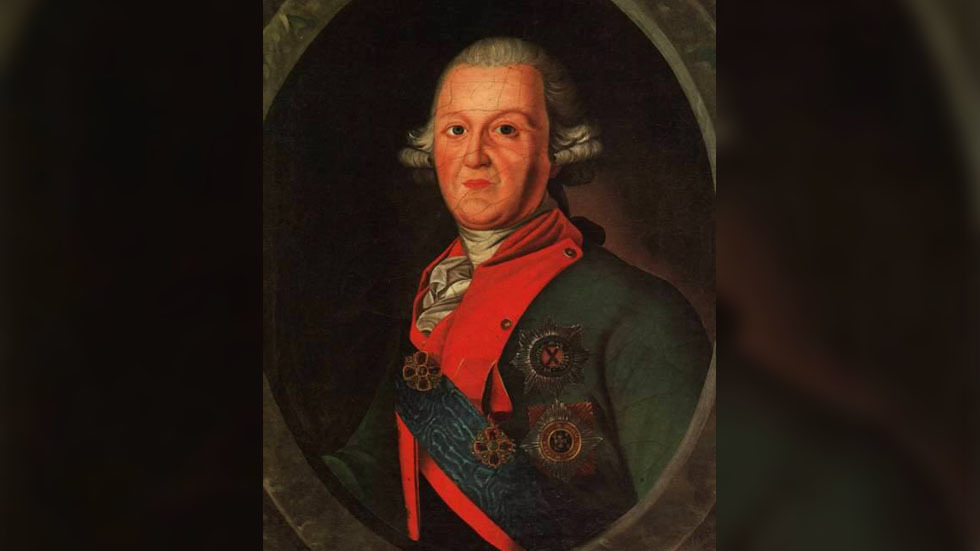
In July, the disease struck more severely. By the end of the month, more than a hundred deaths from the plague were being recorded per day, and the number was constantly growing. By August, it was raging throughout central Russia. Those who had somewhere to go fled Moscow and spread the disease everywhere. Eropkin furiously blocked the roads, but people left on foot along country roads. In addition, due to the rapid spread of the “ulcer,” epidemic workers such as gravediggers and service personnel became in short supply. Those who remained often tried to escape. As a result, the so-called ‘mortuus’ [service personnel in plague hospitals] were forcibly assigned from among prisoners.
By the end of August, more than 7,000 people died in a month. Moscow began rebelling. People ignored the sanitary measures, believing that since the disease was spreading, such steps were pointless anyway. Moreover, attacks on doctors began.
More dangerous strains of the plague intensified in the summer. Mortality began breaking records, reaching almost 1,000 deaths per day. Mayor Pyotr Saltykov fled Moscow. And then, on September 15, 1771, catastrophe, terrible even by the standards of the time, broke out.
The plague riot
By this time, church leaders had begun making church services as ‘contactless’ as possible. Yet masses of people nevertheless gathered for collective prayers. It is clear what effect such gatherings had during the epidemic. As a result, an icon to which people flocked – and the donation box – was removed from the Varvarsky Gates of Kitay-Gorod. This had been ordered by Archbishop Ambrose, who was acting out of good intentions. However, this move caused what was already a boiling cauldron to simply explode. The crowd destroyed several private houses, demolished the Chudov monastery, and Ambrose was captured and literally beaten to death with hands and sticks. Moreover, the rioters began smashing infirmaries and releasing the sick.
Eropkin reacted harshly: On September 16, after brief and fruitless exhortations, artillery was used against the crowd. The next day, an infantry regiment arrived in Moscow and defeated the rebels. At least a hundred people were killed on Red Square.
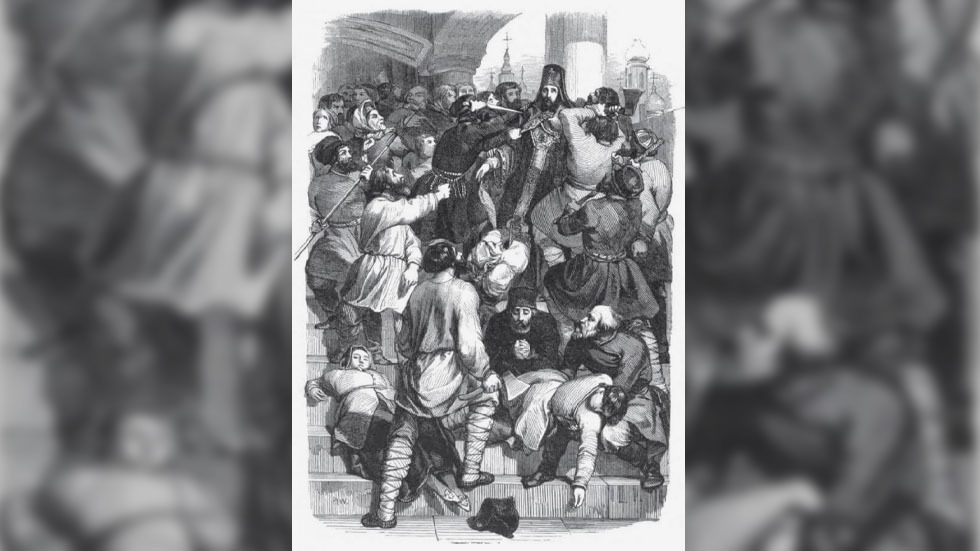
Eropkin was not pleased with such a victory. Moreover, he was injured by a stone himself.
Grigory Orlov, a favorite of the ruler Empress Catherine II, was dispatched to Moscow carrying a large sum of money and with the authority to take any measures necessary to combat the epidemic and unrest. Five people were hanged in connection with the riot and around two hundred received various forms of punishment, from flogging to hard labor. And then the fight against the pandemic began for real.
Orlov gathered the best doctors and asked them specific questions about how to cope. Invested with the authority to act, he energetically got to work. New quarantine facilities and hospitals were built in Moscow and a separate commission was engaged to monitor the carrying out of orders. Clear detailed instructions were drawn up for doctors and officials, and stricter accounting of the dead and sick was introduced. Separately, Orlov organized assistance for those rendered poor by the epidemic, while discharged patients were given small, but tangible sums of money. This encouraged people to seek help in hospitals. The social measures were generally serious. For example, Orlov arranged public work for those who had lost their earnings and organized centralized purchases of goods from impoverished artisans – in short, he approached the problem comprehensively and systematically.
The firm and decisive policies were effective. In addition, collective immunity had begun to develop – many had already recovered, whereas those unable to fight off the disease had died. So, in the autumn, the pandemic began to subside. On November 15, Orlov triumphantly left for St. Petersburg. Although individual cases of the plague were recorded in January 1772, and even in March, the epidemic was on the decline. By April, there were no new cases in Moscow. The authorities announced a reward for handing over the belongings of those who had died of the plague, as well as unburied bodies or those buried outside cemeteries. In total, up to a thousand bodies were found this way. By autumn, the end of the crisis in Russia was announced.
The epidemic in Moscow brings a lot of sad thoughts to mind. Belated measures, the rush from a passive attitude to feverish actions, mad riots disrupting the measures aimed at containing the outbreak – all of that is surely depressing. However, it’s worth noting that both doctors and many statesmen rose to the occasion. Moscow’s fight against the plague in the 18th century demonstrated that firm, energetic leadership with professionals involved in developing a working strategy, and a combination of will and reason, are effective even under the most difficult conditions.

